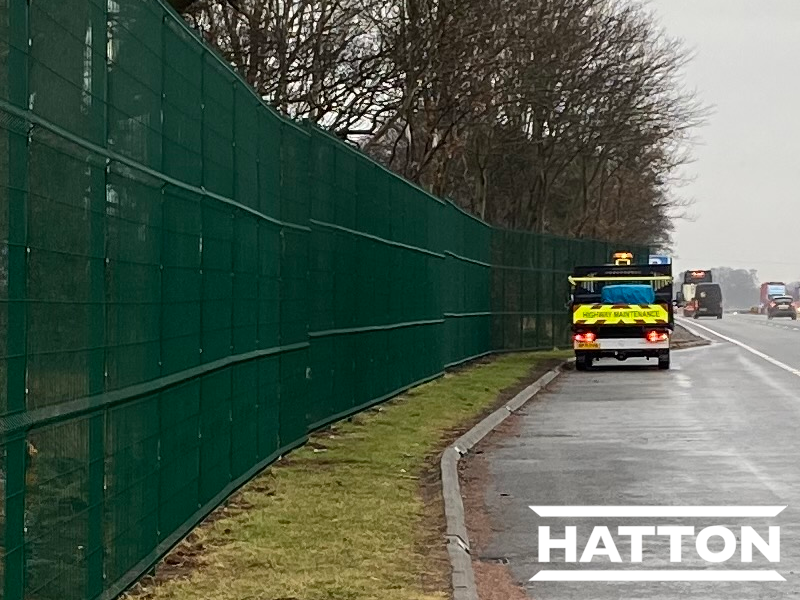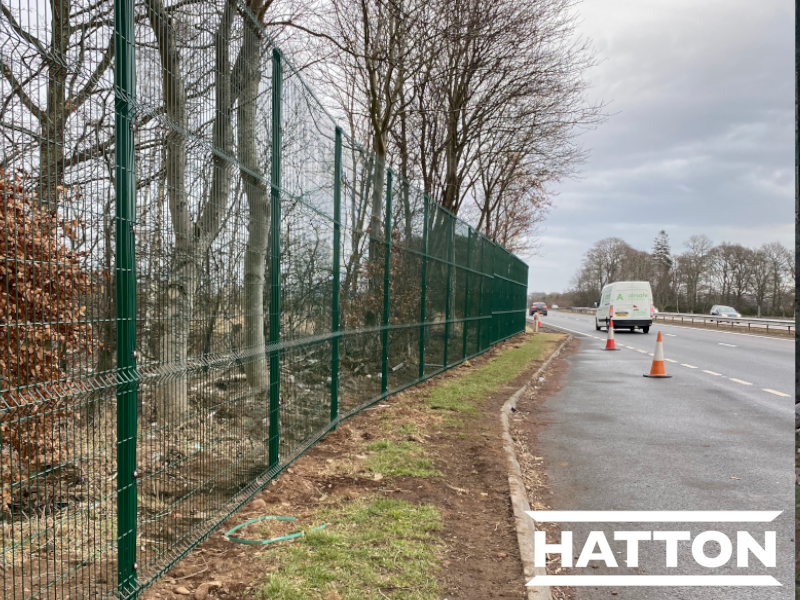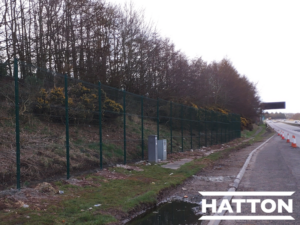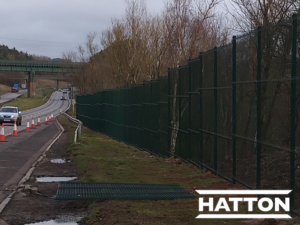A90 Dundee to Aberdeen – Northbound and Southbound Litter Fences
Hatton was contracted by BEAR Scotland to carry out the removal of existing fencing and replacement of new fencing across five locations on the A90 Northbound and on four locations on the A90 Southbound in two planned phases.
The existing chain-link fencing and posts were corroded, broken, leaning and failing, requiring immediate repair and replacement to mitigate environmental impact. New, stronger, anti-climb, longer lasting 3m high V-Mesh litter fencing panels were supplied by FirstFence and installed by the local Aberdeen depot Hatton civils team. The team installed a total of:
- 610 new fence posts
- 529 new V-Mesh panels
- Totalling 1,592m of new fencing across both north and south sections of the A90


Preparation for the new fencing included assessing utility drawings to discover known services underground prior to digging 450-500mm deep foundation holes for the fence posts, digging trial holes by hand, locating and marking services and using a suction powered vacuum excavator to remove material to reduce cable strike risk. The civils crews then fixed in the posts using fix-down bolts and rapid setting concrete followed by the erection of the V-Mesh panels, fitted with mesh clips and secured them using bolts and torque screws. This fencing on average will last from 10-30 years.
National Highways Sector Scheme (NHSS) 12 A/B qualified operatives closed the laybys using temporary traffic management measures which included temporary works warning signs and layby closure signage, and 1.2m tapered off working zones with cones. Operatives were briefed on the risks of working in close proximity to a live carriageway prior to starting works, wearing PPE and following safe site protocols.
Dave Swallow, General Manager- Civils Division said ‘The biggest driver for replacing the layby fencing was to improve local environmental conditions. Defected and damaged fences were allowing litter to blow from laybys into nearby fields which are home to grazing cattle and a variety of wildlife. In this scenario, plastic can easily move into the ecosystem causing a threat to animal health and damaging biodiversity. The client had designed and specified a specific V-Mesh panelling system as a larger, higher quality product which will last longer and reduce future maintenance costs and time, protecting the local environment efficiently.’
Prior to digging fence post holes, our team carefully assessed utility drawings to identify known services and also manually dug trial holes to locate any unknown services prior to excavating the ground. Even after meticulous surveying and marking out, a vacuum excavator was used to suck out material in place of using traditional excavator machinery to further reduce the risk of striking any unknown utility cables or pipes.




